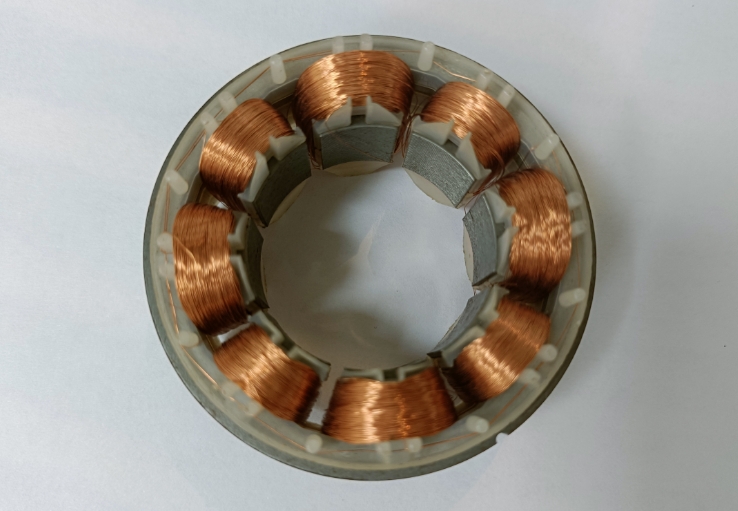Brushless motor winding machines can be classified into two types based on winding methods: internal winding and external winding. The winding requirements may vary depending on the specific specifications of the stator — for example, some applications require winding with fine wire, while others require winding with thick wire. Key considerations when winding fine wire with a brushless motor winding machine, as well as measures to take in case of wire breakage.
I. Precautions for winding fine wires with brushless motor winding machines
1. Precisely control tension
Fine wires typically have a diameter of around 0.1mm and extremely poor tensile strength, making them prone to breaking under even slight external force. Therefore, during winding, tension must be precisely adjusted using a tensioner to avoid both excessive tension causing wire breakage and insufficient tension leading to loose winding and irregular排列.
2. Set the winding speed appropriately
Although faster speeds can be used for fine wire winding to improve efficiency, they must be strictly controlled within the equipment's compatible range. Excessively high speeds can cause wire vibration and increased friction, raising the risk of breakage.

3. Optimize the winding plan
Before winding, a comprehensive plan must be developed based on stator parameters: calculate the coil surface area to determine winding density, assess the compatibility of winding fixtures (such as jigs and spools), and design a scientific winding path (such as layered arrangement and avoiding cross-overlay). A reasonable winding method reduces unnecessary friction between the wire and equipment, thereby lowering the probability of breakage from the source.
4. Ensure equipment condition and maintenance
Check whether the machine configuration meets the requirements for fine wire winding, especially the precision of critical components such as molds and wire-passing holes, ensuring there are no burrs, scratches, or other defects to prevent wire damage during passage.
Regularly maintain the equipment: clean debris from components such as wire-passing wheels and wire nozzles, lubricate the transmission structure, and ensure smooth and stable equipment operation.
II. Measures to Address Wire Breakage During Fine Wire Winding
If wire breakage occurs during winding, follow these steps to troubleshoot and resolve the issue:
1. Adjust the tensioner
Check if the tension parameters are appropriate: if the tension is too tight, gradually loosen it until the wire remains taut without noticeable stretching; if the tension is too loose causing the wire to sway, tighten it appropriately to stabilize the wire movement.
2. Reduce winding speed
If the speed was set too high before the breakage, reduce it appropriately, observe whether the wire runs stably, and then gradually adjust to the optimal speed.
3. Inspect auxiliary components
Focus on checking components such as the wire guide wheel, wire nozzle, and wool felt (used for cleaning or lubricating the wire): If there are impurities (such as metal debris or oil stains), thoroughly clean them; if components show signs of wear, deformation, or cracks, they should be replaced promptly to prevent further damage to the wire.
4. Inspect the quality of the enameled wire
Confirm that the enameled wire used meets specifications: check for issues such as uneven diameter, damaged enamel coating, or knots in the wire. If any issues are found, replace the wire with qualified material.









